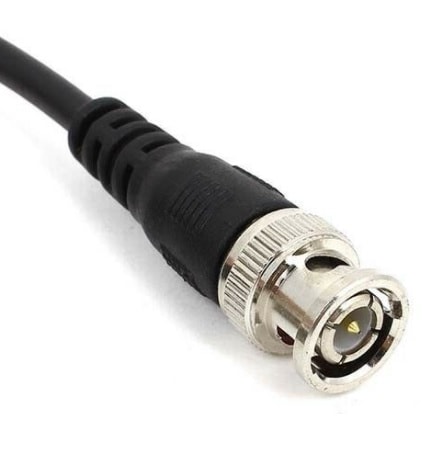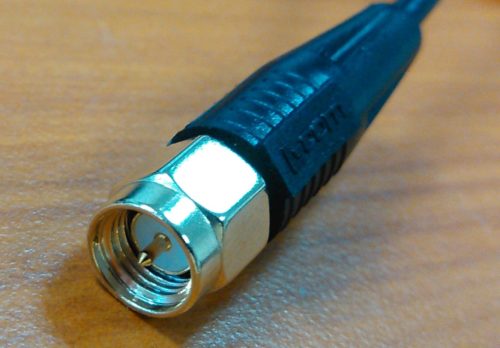Ribbon Cables
Leave a CommentAlso called a planar cable or flat ribbon cable, a ribbon cable has a wide, flat rectangular shape that resembles a ribbon. Each ribbon cable holds parallel wires that run on a flat plane. The distinct design makes it easier to work with when space is limited. Learn more about the types of ribbon cables, their advantages, and what to consider when choosing the right cables for your application.
Types of Ribbon Cables
 Ribbon cables are available in a few different styles and configurations. The most popular types from most common to least common are:
Ribbon cables are available in a few different styles and configurations. The most popular types from most common to least common are:
- Standard. The standard ribbon cable is identified by its gray color and is commonly used for mass termination applications.
- Rainbow. Rainbow ribbon cables are color-coded standard cables, which make organization and identification easier. In some cases, each colored ribbon is split into individual terminations.
- Round-to-flat. This type of cable starts bundled in a circular shape, then flattens into a ribbon. The round-to-flat ribbon cable is adaptable and ideal in tight spaces.
- Twisted flat. A variant of standard ribbon cables, twisted flat ribbon cables have pairs of conductors that are twisted and bonded together. They have alternating twisted and untwisted parallel sections. Distinct from twisted pair cables, a twisted flat ribbon cable has parts of the cable that are not twisted. This design allows the connectors and PCB headers to be terminated with conventional IDC ribbon cabling techniques.
- Bonded. Bonded ribbon cables lack the flexibility of other ribbon cable types, but bonded cables simplify mass termination. The bonded design better organizes the cables from one end to the other.
Considerations for Choosing Ribbon Cables
When selecting ribbon cables for your application, consider the following specifications:
- Pitch. The pitch pertains to the spacing of conductors within a ribbon cable. Common pitch measurements are 0.5 mm, 1 mm, 1.25 mm, and 2 mm. The correct pitch will vary based on various ribbon cable requirements.
- Extreme temperatures. Basic ribbon cables work just fine in moderate temperatures. For high-temperature environments, a silicon jacket may be necessary to protect the ribbon cable.
- Flexibility. A standard ribbon cable is very flexible. For settings with extremely limited space, you may need to order a customized ribbon cable with greater flexibility.
- Long life. Choose ribbon cables that have been tested and rated for longevity.
- Fire resistance. Fire resistance is important for both the safety and functionality of the electrical device. Be sure to choose a ribbon cable that is fully compliant with the fire safety regulations of its intended application.
Advantages of Standard Copper Conductor Ribbon Cables
The key advantages of ribbon cables are flexibility, customizability, space efficiency, and noise reduction. In the past, ribbon cables had limited applications due to unique termination techniques. However, modern innovations in ribbon cable technology have enabled engineers to use standard cable preparation tools and automation. Now, ribbon cables can be mass terminated by solder-cup connectors or crimp contacts and configured for a wide range of electrical applications.
Reliable Ribbon Cables From Electro-Prep
The expert team at Electro-Prep can help you design ribbon cables tailored to your project. All of our employees are trained in-house, allowing us to provide a consultative approach for every client. We can provide you with the ideal ribbon cable paired with desired specifications to match your project’s needs. Electro-Prep offers customizable options that include:
- 2 to 100 conductors in wide-spacing to high-density configurations
- MDR, IDC, and other connector options
- Integration with electronic components and materials
- Full electrical continuity testing with Cirrus test systems
- Flat flexible cable (FFC) alternatives
Contact us today to learn more about our products and capabilities.

 Wire Harness vs. Cable Assembly: Similarities
Wire Harness vs. Cable Assembly: Similarities In addition to wire harnesses and subassemblies, Electro-Prep, Inc. is also a trusted provider of “spider board assemblies” to a DOD contractor.
In addition to wire harnesses and subassemblies, Electro-Prep, Inc. is also a trusted provider of “spider board assemblies” to a DOD contractor. Electro-Prep supplies junction boxes for a multinational company in the water purification industry. This company originally approached us for a turnkey electromechanical assembly solution. We worked closely with them to engineer an electromechanical box-build
Electro-Prep supplies junction boxes for a multinational company in the water purification industry. This company originally approached us for a turnkey electromechanical assembly solution. We worked closely with them to engineer an electromechanical box-build Electro-Prep improved product production and assembly time for a marine industry manufacturer that produces a wide array of unmanned underwater vehicles (UUVs). We developed a solution for binding and combining wires into a single harness, streamlining the vehicle’s wiring process while complying with industry performance and safety standards.
Electro-Prep improved product production and assembly time for a marine industry manufacturer that produces a wide array of unmanned underwater vehicles (UUVs). We developed a solution for binding and combining wires into a single harness, streamlining the vehicle’s wiring process while complying with industry performance and safety standards.  While box-builds can vary significantly based on the components involved and the complexity of the final product, most processes follow the same basic steps. These steps are:
While box-builds can vary significantly based on the components involved and the complexity of the final product, most processes follow the same basic steps. These steps are: Bayonet Neill-Concelman (BNC) coaxial cable connectors are one of the most commonly used connector types. They feature a twist and snap bayonet connection design that requires a quarter-turn to form a connection.
Bayonet Neill-Concelman (BNC) coaxial cable connectors are one of the most commonly used connector types. They feature a twist and snap bayonet connection design that requires a quarter-turn to form a connection.  Threaded Neill-Concelman (TNC) connectors are a miniature threaded variation of BNC connectors. However, they are waterproof and more rugged.
Threaded Neill-Concelman (TNC) connectors are a miniature threaded variation of BNC connectors. However, they are waterproof and more rugged. Subminiature Version A (SMA) connectors are 50 Ω connectors. They are available in several formats, including male vs. female, straight-through vs. right-angled, and more.
Subminiature Version A (SMA) connectors are 50 Ω connectors. They are available in several formats, including male vs. female, straight-through vs. right-angled, and more.  7/16 DIN (Deutsches Institut für Normung) connectors have a threaded design. They are typically used for high-wattage transmissions.
7/16 DIN (Deutsches Institut für Normung) connectors have a threaded design. They are typically used for high-wattage transmissions. QMA connectors are similar to SMA connectors. However, they have a snap-lock design that allows for faster and easier connection/disconnection and 360° rotational capabilities after connection that allows for better installation flexibility.
QMA connectors are similar to SMA connectors. However, they have a snap-lock design that allows for faster and easier connection/disconnection and 360° rotational capabilities after connection that allows for better installation flexibility.  Micro coaxial (MCX) connectors are small form-factor connectors. They are designed for use in applications with size or space limitations.
Micro coaxial (MCX) connectors are small form-factor connectors. They are designed for use in applications with size or space limitations.  Radio Corporation of America (RCA) connectors are also known as cinch connectors. They typically feature three color-coded jacks and plugs (Red, Yellow, and White).
Radio Corporation of America (RCA) connectors are also known as cinch connectors. They typically feature three color-coded jacks and plugs (Red, Yellow, and White).  A
A